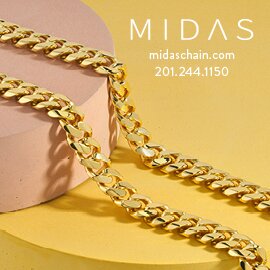For the past nine years, the Silver Promotion Service has sponsored surveys of retail jewelers regarding their attitudes toward silver jewelry as a basic product category. The study among other things compares silver sales with diamonds, bridal jewelry, gold, and platinum. The purpose of these studies is to measure silver’s key results and basically to get the answer to a basic question every marketer must ask: how is silver doing as a product category.
The study asks nine basic questions and they are:
· What merchandise category offers the best maintained margin?
· What merchandise category has the best inventory turn?
· How important is silver to your retail jewelry store’s business?
· How much have you increased your inventory investment in silver jewelry?
· What is your level of optimism for silver jewelry to continue its growth rate?
· What age groups offer the best opportunity for silver jewelry?
· What share of your store’s business is represented by silver jewelry?
· What is the best-selling opportunity for selling silver jewelry?
During the past nine years, the results of the studies have been consistent and significant in recording jewelers’ opinions of the importance of silver jewelry in their merchandise mix. Some of the important highlights are:
Perhaps, the most important finding of the 2017 study is 67% of the jewelers surveyed consider silver jewelry to be very important or important in their merchandise mix. The following points underscore why two thirds of the jewelers surveyed consider silver jewelry important to their business. Measuring actual sales, margin contribution, inventory turn, and the opportunity for continued sales and margin growth all paint a very positive picture for silver.
· Silver jewelry provides the best maintained margins in comparison with bridal, diamonds, gold and platinum jewelry. Over the nine years of studies, silver’s maintained margin was continually the highest cited by an average of 48% of the jewelers participating. After silver came diamonds, bridal jewelry, and gold and platinum jewelry.
· Silver’s share of the retailers’ sales on-average hovered around 34% of unit sales and 29% of dollar sales. This fact underscores silver’s importance from a basic sales perspective. The key take-away from this result is silver attracts walk-in traffic and generates a significant portion of unit and dollar sales. 29% of dollar sales coming from silver products is a significant portion the business!
· When you add the fact that silver offers the best maintained margin year after year, you not only have a great sales story but also a great profit story as well!
· Is it any wonder that silver sales have increased on average by 71% over the nine-year time period? As you might expect, 65% of the responders reported silver jewelry sales were an important part of their holiday sales picture.
· Female self-purchases are thought to be the best-selling sales opportunity by over half of the retailers participating. The two other categories that are also significant sales opportunities are the gift and youth markets. This result is confirmed by the fact that 90% of the age groups buying silver jewelry are below 50 years of age.
· The results of the studies also account for the rationale for jewelers to continue to increase their inventory of silver products
· Interestingly enough, even with significant increases in inventory investment by jewelers, nearly half of the respondents report the best inventory turn comes from silver products.
So, to sum up and answer the basic question of how silver is doing, it is clear you come to one conclusion: Silver is doing very well and exceeds expectations on every key operating measurement basis.

